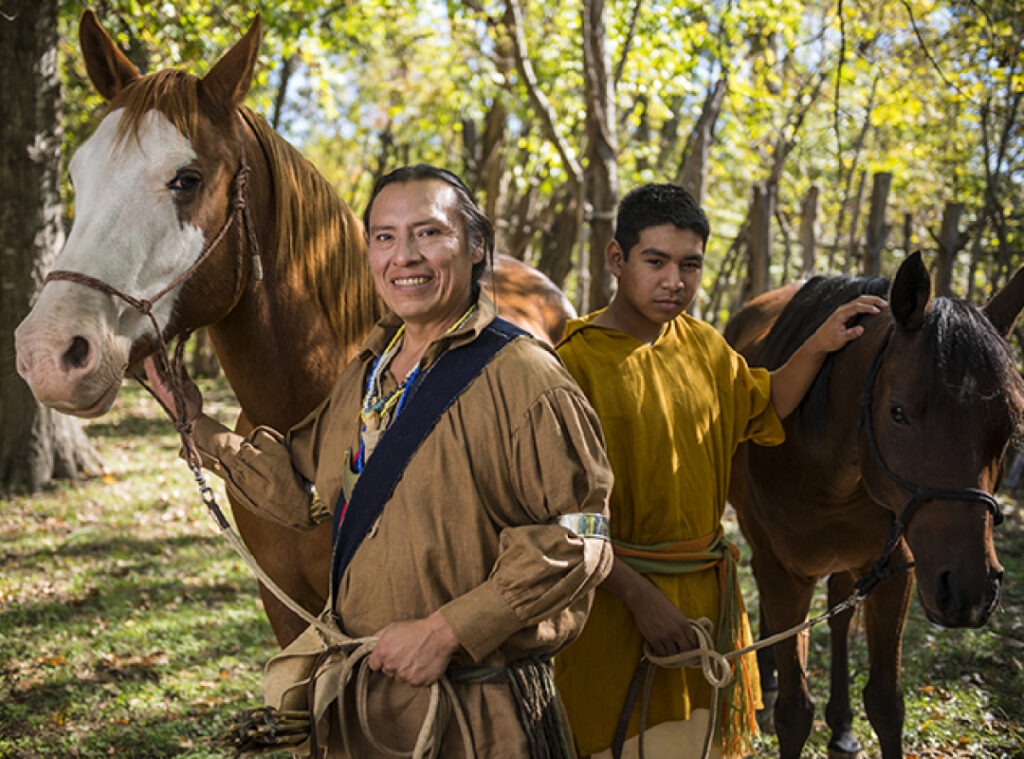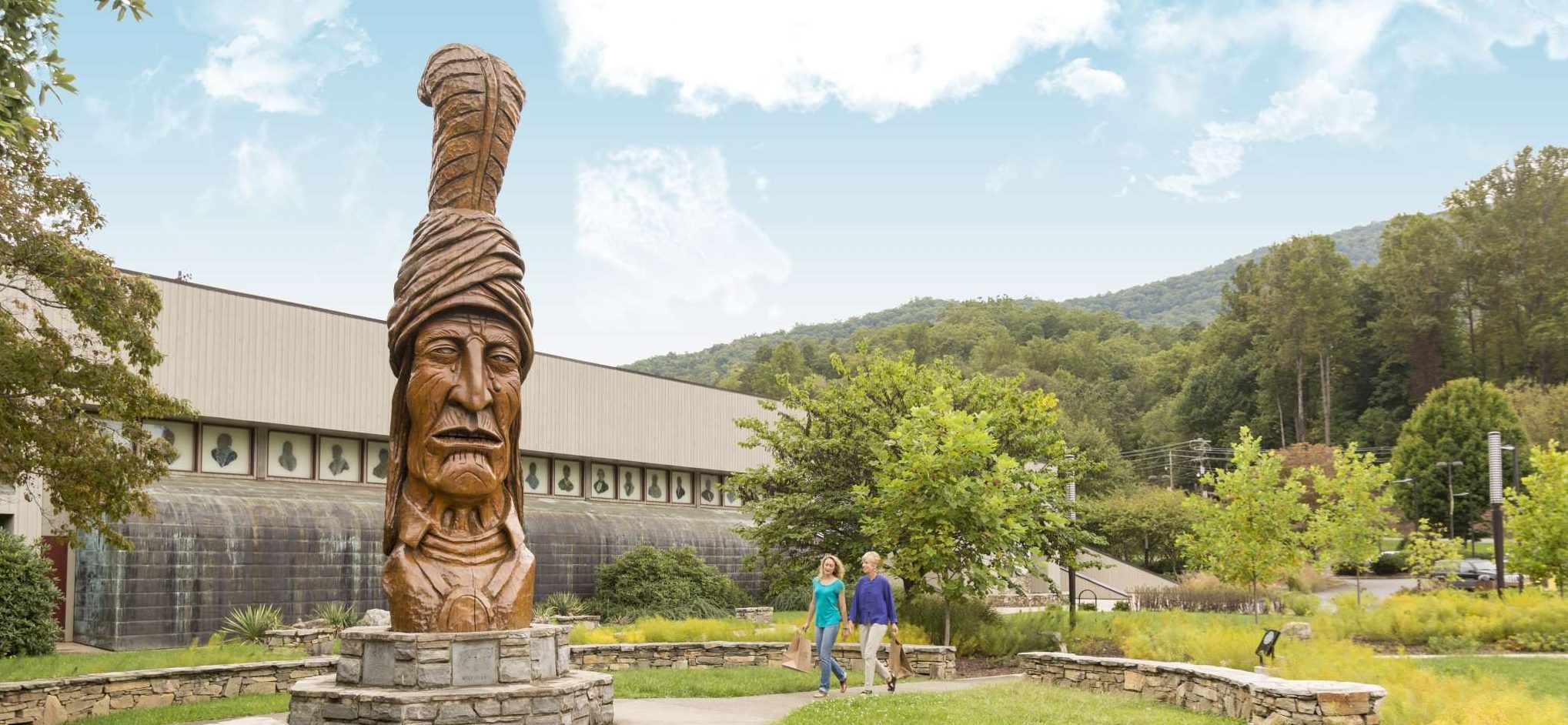
The Enduring Spirit: Exploring the Cherokee Nation Through Immersive Cultural Tourism
TAHLEQUAH, Oklahoma – For many, the mention of Native American nations in Oklahoma conjures images of vibrant casino floors, a testament to the economic sovereignty many tribes have achieved. But venture deeper into the rolling hills and fertile valleys of northeastern Oklahoma, and a far more profound and ancient story unfolds – one of resilience, rich heritage, and an enduring spirit that defines the Cherokee Nation. Here, cultural tourism isn’t just an industry; it’s a living narrative, an invitation to understand a people who have navigated immense challenges to preserve their identity.
The Cherokee Nation, the largest tribal nation in the United States with over 400,000 citizens worldwide, has meticulously cultivated an array of cultural tourism experiences that go far beyond superficial engagement. These initiatives serve a dual purpose: to educate the world about Cherokee history and contemporary life, and to generate revenue that directly supports tribal programs, from language revitalization to healthcare and elder care.

"We want people to understand that the Cherokee Nation is not a relic of the past; it is a vibrant, self-governing nation actively shaping its future while profoundly honoring its heritage," says Janice Pease, a spokesperson for Cherokee Nation Cultural Tourism. "Our sites offer an authentic glimpse into our journey – from our ancestral lands in the Southeast, through the tragedy of the Trail of Tears, to our thriving nation today."
A Journey Through Time: The Cherokee Heritage Center
The heart of Cherokee cultural tourism beats strongest at the Cherokee Heritage Center in Park Hill, just outside Tahlequah, the capital of the Cherokee Nation. This sprawling complex is a national treasure, serving as a primary repository for Cherokee history, art, and culture.
Upon arrival, visitors are immediately drawn into the "Trail of Tears: A Cherokee Legacy" exhibit. This powerful and somber installation chronicles the forced removal of the Cherokee people from their ancestral lands in the southeastern United States to Indian Territory (present-day Oklahoma) during the 1830s. Through artifacts, first-person accounts, and evocative multimedia displays, the exhibit doesn’t just recount a historical event; it conveys the immense suffering, courage, and determination of those who endured the "Nunna daul Isunyi," the Trail Where They Cried.
"It’s an emotional experience for many, especially for our own people," notes Robert Lewis, a cultural interpreter at the Center. "But it’s crucial. You cannot understand the Cherokee Nation today without understanding the resilience born from the Trail of Tears. It’s a testament to our will to survive and thrive against unimaginable odds."
Beyond the somber history, the Center bursts with life and tradition. The Diligwa 1710 Cherokee Village offers an immersive journey into the daily life of a Cherokee village prior to European contact. Costumed interpreters, fluent in the Cherokee language and skilled in traditional crafts, greet visitors. Here, one can witness the intricate process of basket weaving from river cane, watch potters shape clay into utilitarian and artistic vessels, and observe the construction of traditional homes. Children are often captivated by demonstrations of stickball, a rigorous traditional game that predates lacrosse, played with hand-carved sticks and a deerskin ball.
Adjacent to Diligwa is Adams Corner Rural Village, depicting a Cherokee crossroads community from the late 19th century. This area illustrates the adaptation and resilience of the Cherokee people after removal, showcasing their development of schools, farms, and businesses while maintaining cultural practices. It’s a living tableau of a self-sufficient nation rebuilding.
Beyond the Main Hub: Scattered Gems of History

While the Cherokee Heritage Center anchors the cultural tourism experience, the Nation’s story is spread across various significant sites throughout its 14-county jurisdictional area in Oklahoma.
One such crucial site is Sequoyah’s Cabin near Sallisaw. This humble log cabin, preserved as a National Historic Landmark, was the home of Sequoyah (George Gist), the brilliant Cherokee linguist who, in the early 19th century, single-handedly developed a written syllabary for the Cherokee language. This monumental achievement allowed the Cherokee Nation to become literate in their own language, publishing books, newspapers (like the Cherokee Phoenix, the first newspaper published by Native Americans in the U.S.), and even their constitution. The cabin stands as a powerful symbol of intellectual prowess and self-determination.
Further north, the John Ross Museum in Park Hill honors the legacy of Principal Chief John Ross, who led the Cherokee Nation through the tumultuous period of removal and subsequent rebuilding. His strategic leadership and tireless efforts to protect Cherokee sovereignty are meticulously documented, offering insights into the complex political landscape of the era.
Another unexpected gem is the Will Rogers Memorial Museum in Claremore. While Will Rogers is widely known as America’s "cowboy philosopher" and humorist, many are unaware of his deep Cherokee roots. The museum celebrates his life and career while also acknowledging his proud Cherokee heritage, connecting a beloved American icon to the rich tapestry of the Nation.
The Murrell Home in Park Hill, built in 1845, offers a glimpse into the life of a prominent white merchant married to a Cherokee woman, and the complex social dynamics of the Cherokee Nation during the antebellum period. It’s one of the last remaining antebellum plantation homes in Oklahoma, providing a unique perspective on the intersection of cultures and economies during a pivotal time.
Cultural Immersion: More Than Just Sightseeing
What sets Cherokee Nation cultural tourism apart is its emphasis on immersive, participatory experiences. Visitors aren’t merely observers; they are invited to engage. Workshops on traditional crafts like intricate beadwork, pottery, and basket weaving allow guests to learn directly from master artisans. Cooking demonstrations introduce the flavors of traditional Cherokee cuisine, featuring dishes like gadu (hominy soup) and fry bread.
Language is another key component. While English is universally spoken, efforts to revitalize the Cherokee language (Tsalagi) are evident everywhere. Visitors may hear interpreters speaking the language, and some programs offer basic language lessons, highlighting the beauty and complexity of a tongue that was nearly lost. "Every basket woven, every word spoken in Cherokee, every story shared, is an act of defiance against erasure and a testament to our enduring spirit," says an elder cultural preservationist, emphasizing the living nature of their traditions.
Storytelling, an ancient and revered Cherokee art form, is central to the visitor experience. Gatherings around a fire or within traditional longhouses often feature elders sharing creation stories, historical accounts, and moral lessons passed down through generations. These sessions are deeply personal and provide a profound connection to the Cherokee worldview.
Economic Impact and Cultural Preservation
The success of Cherokee Nation cultural tourism is not just measured in visitor numbers; it’s seen in its tangible impact on the Nation’s economic and social well-being. Tourism-generated revenue is reinvested into essential tribal services, including:
- Language Preservation Programs: Funding for immersion schools, adult language classes, and development of new educational materials.
- Cultural Preservation: Support for artisans, historical research, and maintenance of sacred sites.
- Healthcare and Education: Contributing to the comprehensive healthcare system and educational opportunities for Cherokee citizens.
- Job Creation: Providing employment for hundreds of Cherokee citizens as interpreters, artisans, administrative staff, and more, fostering economic stability within the Nation.
"Tourism allows us to share our story on our own terms, to correct misconceptions, and to fund the very programs that keep our culture alive for future generations," states Chuck Hoskin Jr., Principal Chief of the Cherokee Nation. "It’s a powerful tool for sovereignty and self-determination."
Furthermore, cultural tourism serves a vital educational role, dispelling stereotypes and fostering a deeper, more accurate understanding of Native American peoples. Visitors leave with not just facts, but a profound sense of connection and respect for a living culture that has endured and thrived.
A Call to Connect
In a world increasingly seeking authentic experiences and meaningful connections, the Cherokee Nation offers a journey unlike any other. It’s an invitation to step away from the superficial and delve into the heart of a resilient people. From the solemn remembrance of the Trail of Tears to the vibrant demonstrations of traditional arts and the warmth of Cherokee hospitality, a visit to the Cherokee Nation is more than just a vacation – it’s an education, an inspiration, and a testament to the enduring human spirit.
For those seeking to understand the true depth of American history and the vibrant tapestry of its indigenous cultures, the path leads to northeastern Oklahoma, where the story of the Cherokee Nation continues to unfold, rich with lessons from the past and hopes for a future forged in resilience.


